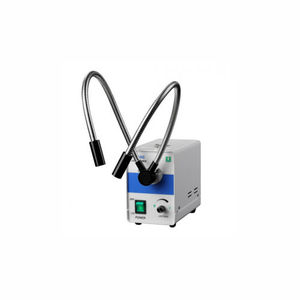
Mice laboratory stereotactic frame 68001for ratsbench-top1-tower
Add to favorites
Compare this product
Characteristics
- Animal type
- for mice, for rats
- Option
- bench-top, 1-tower
Description
Stereotaxic instruments are widely used in many fields such as neuroanatomy, neurophysiology, neuropharmacology and neurosurgery etc.
This standard stereotaxic instrument meets the experimental needs of rats and mice primarily, but it can be adapted for other animals.
The stereotaxic instrument is fully equipped. The U-frame design provides stability and adaptability.
Dual-lead screws ensure stable, precise and smooth handling. Standard stereotaxic instruments include a left 3-axis manipulator arm, rat / mouse adapter (depending on model), traditional ear bars (18˚), and standard probe holder. Other accessories are available such as a second manipulator arm, rat or mouse adapters, 45 ° ear bars, digital upgrade with precise display (10µm), etc.
Mouse/Neonatal Rat Adaptor
The ear bars of this adaptor are made of resin and the tips are specially treated, which ensures that the head is held firmly without damage to the skull.
There are scales on the incisor and the earbars. The height can be adjusted flexibly, which is good for experiments from different angles.
Considering there is no ear canal for neonatal rat, this adaptor employs a cheekbone locker to replace the ear bars.
This design provides noninvasive and stable way to hold the neonatal rat.
Mouse Adaptor
It holds the mouse head by a palate and incisor, and offers vertical regulation to make the head level or at certain angle.
The Vertical adjustable range from +10mm to -20mm, with 100μm resolution; Horizontal adjustable range of 43.5mm;
Horizontal rotatable range of 35°.
Related Searches
- Thermometer
- Clinical thermometer
- Digital thermometer
- Rack
- Probe thermometer
- Stainless steel rack
- Activity meter
- Animal research cage
- Modular animal research cage
- Experiment maze
- Induction chamber
- Mice experiment maze
- Rat experiment maze
- Ambient thermometer
- Mobile rack
- Animal research experiment maze
- Rodent animal research cage
- Laboratory stereotactic frame
- Rodent laboratory stereotactic frame
- Bench-top laboratory stereotactic frame
*Prices are pre-tax. They exclude delivery charges and customs duties and do not include additional charges for installation or activation options. Prices are indicative only and may vary by country, with changes to the cost of raw materials and exchange rates.















